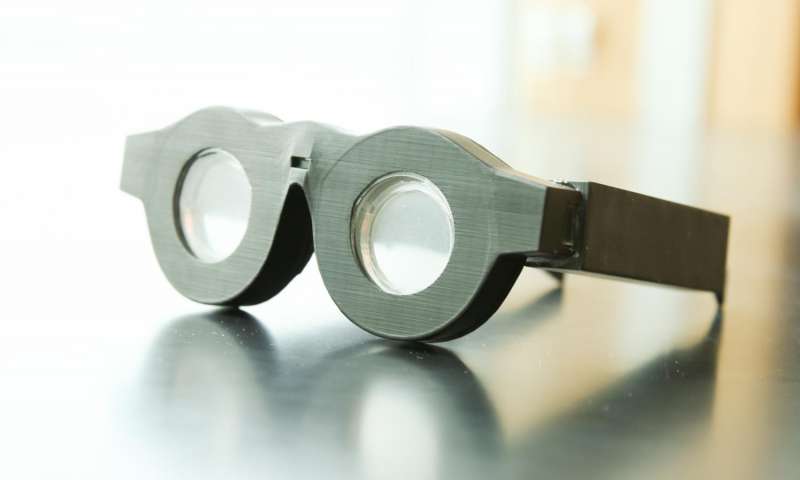
As most people age, the crystalline lenses in their eyes start to stiffen and are unable to change shape as easily. As a result, objects in close range start to look blurry, forcing many middle-aged adults to carry reading glasses either around their necks or tucked away in a handbag. Those already suffering from nearsightedness, or myopia, a condition where distant objects appear blurry, have to depend on bifocals or, even worse, switch between two pairs of glasses. However, thanks to some Utah researchers, there may finally be a solution — self-adjusting “smart” glasses.
The team, led by electrical and computer engineering professor Carlos Mastrangelo and doctoral student Nazmul Hasan, took an entirely new approach to eyeglass lenses. Instead of using glass or plastic, they tried to mimic the eye lens by enclosing glycerin, a thick colorless liquid, inside two flexible rubber-like membranes. Three mechanical actuators attached to the rear membrane help move it back and forth. As the membrane moves, it changes the curvature of the liquid lens, altering the focal length, or distance, between the lens and the eye. The lenses are housed inside a special eyeglass frame containing electronics and a rechargeable battery to control and power the actuators.

When a wearer looks at an object, a meter embedded in the frame’s bridge instantly measures the distance from the eye and transmits the information to the actuators, which curve the lenses the appropriate amount. The lenses can change focus from one object to another within 14 milliseconds, which means that the wearer can see everything, near and far, clearly. Similar to other smart devices, the batteries that operate the actuators do need to be charged. But given that they can last up to 24 hours, it is not a significant inconvenience.
Before wearing the glasses, the user has to input his/her eyeglass prescription using a unique smartphone app. The information, conveyed via a Bluetooth connection, automatically calibrates the lenses. Should the prescription change, it can be instantly updated. This means one pair of these smart glasses could last a lifetime!

However, the researchers, who unveiled the prototype at the Consumer Electronics Show held in Las Vegas in January 2017, realize that the smart glasses are not very marketable in their current cumbersome state. Mastrangelo, who has set up Sharpeyes LLC to produce the glasses, expects a lighter, more attractive version to be available within three years.
Resources: phys.org, smithsonianmag.org, unews.utah.edu.